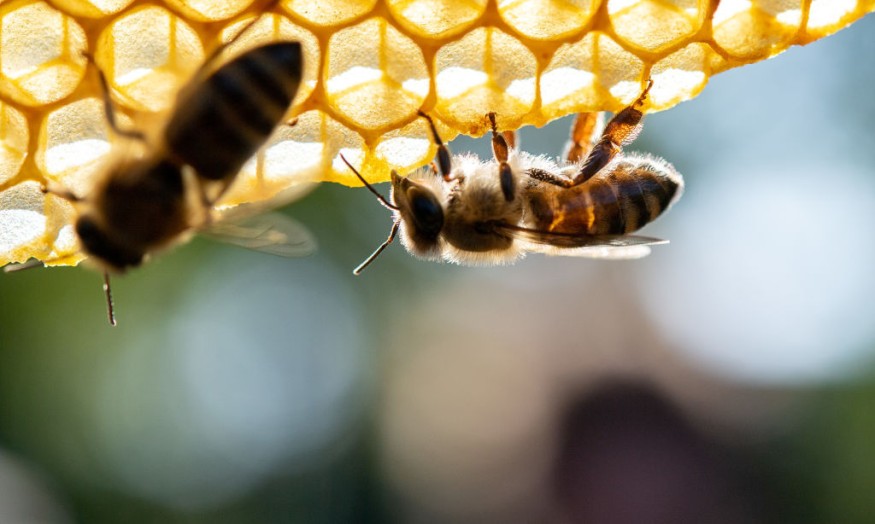A research team recently found that in the infected wild populations, older forager honeybees would perform foraging dances which they use to exhibit other bees where locate food, close to the hive's periphery.
A Scientific American report said humans are not the only creatures that practice social distancing "to deal with spreading Varroa destructor mites" and can feed on bees' organs and harbor disgusting viruses.
Researchers observed such changes in wild and caged bees, which have an infection with mites, which are one of the biggest worldwide threats to honeybees.
Such actions seeped intended to prevent sickening the young nurse bees and larvae in the center of the hive. The Infected wild bees are also grooming one another for parasites more intensely in the center of the hive, among the more treasured young bees.

Change in Social Organization Interpreted
According to an agricultural scientist at the University of Sassari in Italy, Michelina Pusceddu, also lead author of the study published in Science Advances, interpreted such a change in the social organization as a probable tactic to restrict the transmission of parasites within the hive.
As forecasted, the infected honeybees in cages were given more grooming than the uninfected ones. In contrast to expectations, though, the infected insects engaged in more socializing, such as sharing regurgitated food and touching antennae.
The authors explained that this might reflect a trade-off between restricting illness spread and keeping communication.
Alberta Satta, a senior study author at the University of Sassari, noted that social distancing is quite too expensive on a tiny scale or within the same group.
Exhibiting Social Distancing Behavior
According to entomologist Adam Dolezal from the University of Illinois at Urbana-Champaign, who was not part of the new study, the research offers an instance of how evidence be found for really multifaceted behavioral changes that the so-called social animals have, such as the "social distancing" phenomenon, to address the special challenges of living in a large social group.
Dolezal's study found that honeybees are reducing their contact with bees infected with a pathogen known as "Israeli acute paralysis virus," which insects can detect through smell.
Specifically, black garden ants, birds, lobsters, and nonhuman primates exhibit social distancing behavior. However, maintaining one's distance comes with a cost for any social animal.
Israeli Acute Paralysis Virus
Also called the IAPV, the Israeli acute paralysis is described in the PLOS Pathogen journal as a "widespread RNA virus" involving honeybees that have been associated with colony losses. In this 2014 study, IAPV was discovered to be the third most common viral infection in bee colonies after DWV and Black Queen Cell Virus or BQCV.
Over the four-year course, the infection IAPV found in the brood was substantially higher in adult bees. When the researchers divided their experimental bee colonies into those that have more than ten frames covered with adult workers and over six frames that were filled with brood and food stores against those with fewer than ten frames of adult bees, less than six combs that have brood and tiny patches of food stores.
Related information about social distancing being found among bees is shown on Brut America's YouTube video below:
RELATED ARTICLE : Unlike Honeybees, Solitary Bees are Born with Functional Internal Clock, Study Finds
Check out more news and information on Honeybees in Science Times.
© 2025 ScienceTimes.com All rights reserved. Do not reproduce without permission. The window to the world of Science Times.










